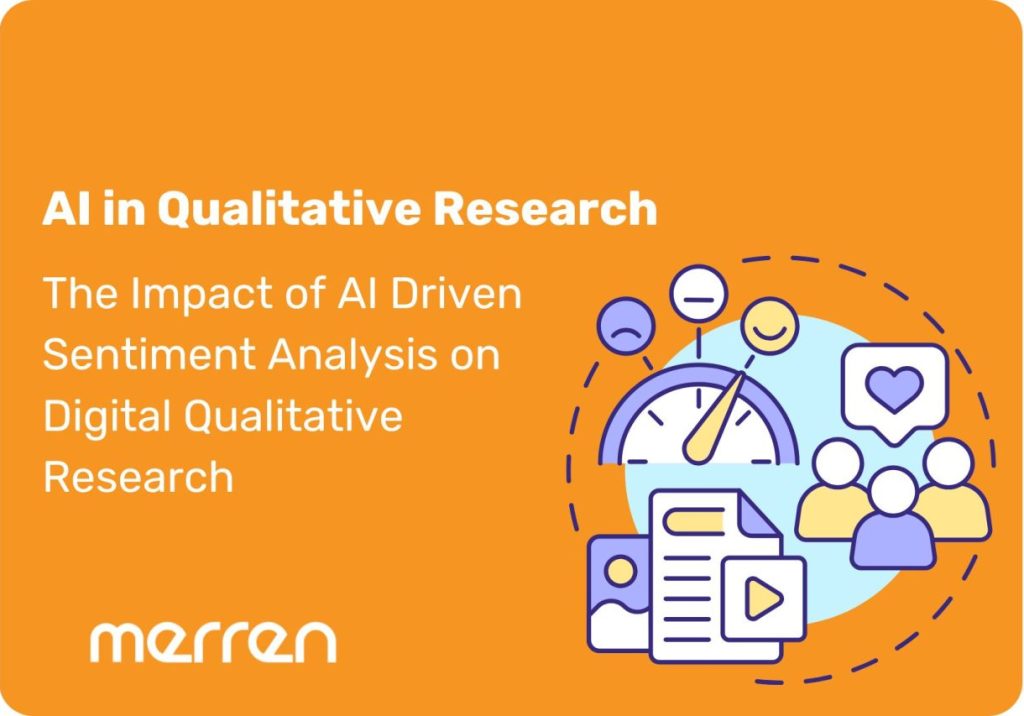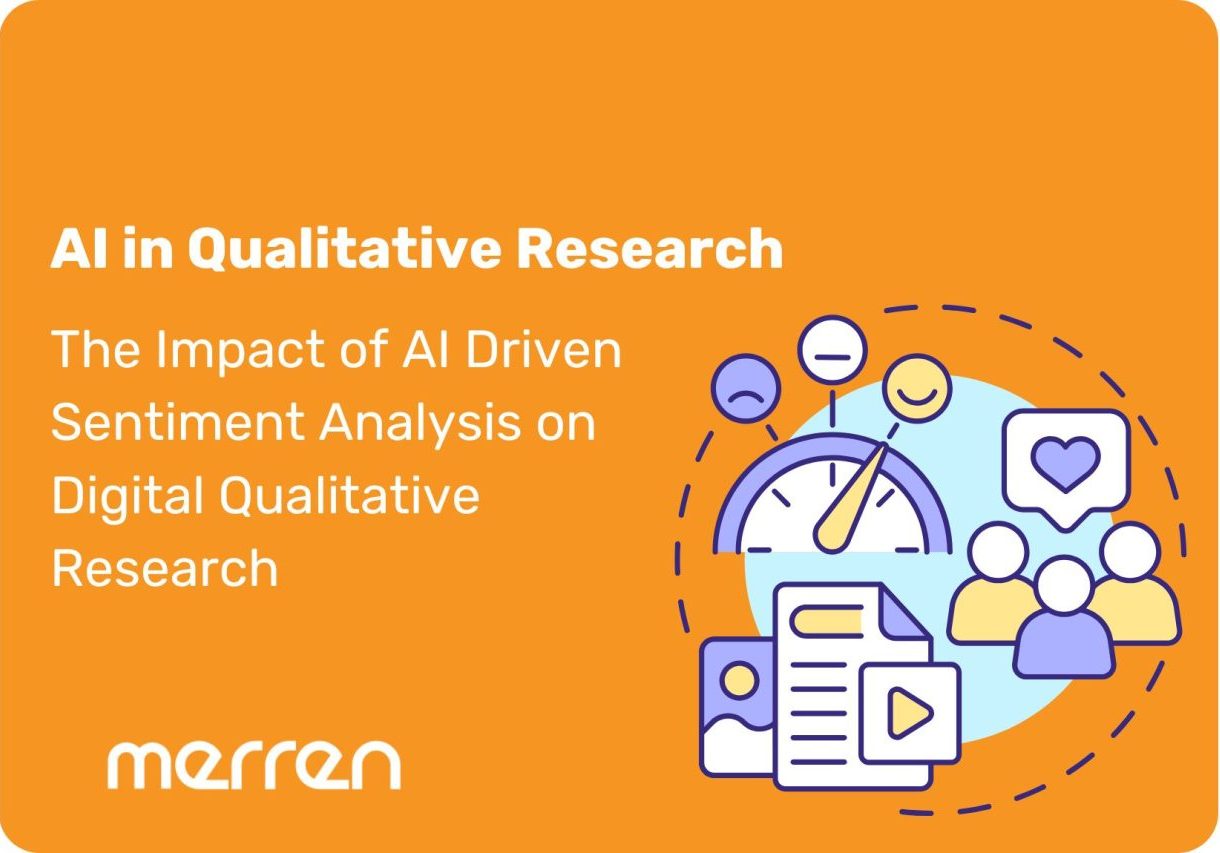Customer experience and market research professionals rely heavily on understanding what customers truly feel. Surveys, interviews, and open-ended feedback provide the richest insights, but analyzing them at scale has always been a challenge. Traditional qualitative analysis is time-consuming, resource-heavy, and often limited in scope. This is where AI sentiment analysis can turn this unstructured feedback into decision-ready insight..
But while AI makes qualitative research scalable, professionals must also understand its workflow, validation methods, and limitations to ensure accuracy and trustworthiness. In this blog, we’ll discuss how AI-driven sentiment analysis works and how to validate AI-generated themes.
What Is AI Sentiment Analysis?
Sentiment analysis simply means assessing the emotional metrics behind a customer’s feedback. This feedback comes via surveys, research questionnaires, testimonials , social media posts. AI sentiment analysis is the use of natural language processing (NLP) and machine learning to automatically detect emotions, opinions, and attitudes expressed in qualitative data. Qualitative inputs include open-ended survey answers, customer reviews, call transcripts, or focus group discussions containing nuance.
Why do you need AI to conduct sentiment analysis?
- Quick emotional metric detection in real time. CX teams can close the customer feedback loop across touchpoints.
- Faster turnaround time in analytics for human researchers. This helps them segment how people feel across various experiences.
- Useful for scaling research when it crosses geographical boundaries. Large scale data becomes cumbersome for manual assessment. It is prone to errors. AI can surpass this.
- AI can detect a variety of tones including sarcasm, anger, happiness across nuanced feedback.
Here is How the AI-Powered Sentiment Analysis Works
To understand how AI enhances qualitative research, let’s break down the typical workflow:
1. Data collection
AI sentiment analysis starts with gathering qualitative inputs from multiple channels:
- Customer surveys with open-text questions
- Chat and email transcripts
- Social media comments
- Call center recordings
- Online reviews
2. Preprocessing & cleaning
Before applying automated coding qualitative methods, data is cleaned for accuracy. This step includes:
Removing duplicate responses, standardizing language (e.g., abbreviations, slang) and filtering out irrelevant noise (e.g., system messages in chats).
3. Automated coding and theme detection
Traditionally, researchers coded data manually analyzing each response and tagging it with themes. With AI, automated coding qualitative techniques assign categories instantly.
- AI clusters words and phrases into meaningful groups.
- It identifies emerging themes without prior assumptions.
- Advanced models recognize context e.g., “cold” in a coffee review means something different than in a hotel review.
4. Sentiment classification
Deep learning models also detect emotion intensity distinguishing between mild irritation and strong anger, or moderate satisfaction and deep enthusiasm. Once themes are identified, AI assigns sentiment scores:
- Positive (customer satisfaction, praise)
- Negative (complaints, dissatisfaction)
- Neutral (factual statements, mixed opinions)
5. Insight generation
The final step is visualizing patterns:
- Which themes dominate?
- Where are customers most dissatisfied?
- What positive drivers stand out?
Methods to Validate Results from AI Sentiment Analysis
AI sentiment analysis is powerful, but it’s not perfect. Biases, misclassification, and overgeneralization can compromise results. For instance, sarcasm or culturally nuanced language often trips up AI. That’s why validation is critical.
- Human-in-the-loop review
Researchers review a sample of AI-coded responses to verify accuracy. So that the AI can learn correctly and not misinterpret key phrases. - Cross-validation with multiple models
Using more than one AI/NLP model to check consistency across outputs. - Back-checking with ground truth data
Comparing AI-generated sentiment with already manually coded datasets to measure alignment. - Iterative feedback loops
Feeding corrected misclassifications back into the AI model so it improves over time.
Common Drawbacks of AI-Driven Sentiment Analysis
While AI accelerates qualitative analysis, professionals must remain aware of potential pitfalls:
1. Overgeneralization of themes
AI may group distinct issues under one umbrella (e.g., “customer support delay” and “delivery delay” both coded as “delay”). This can oversimplify insights.
2. Cultural and linguistic bias
AI trained primarily on English or Western datasets may misinterpret idioms, tone, or culturally specific phrases.
3. Difficulty with contextual nuance
Words like “fine” could mean satisfaction (“It’s fine”) or discontent (“Just fine”) depending on tone. AI often struggles with these nuances.
4. False positives in sentiment
AI may mistakenly flag neutral statements as emotional. For example, “The product was delivered yesterday” may get coded as positive even though it’s factual.
5. Overreliance without validation
Trusting AI blindly without human oversight can lead to flawed strategic decisions.
Best Practices for Using AI in Qualitative Research
To maximize value from AI sentiment analysis, CX and research leaders should adopt these practices:
- Combine AI with human expertise: Use AI for speed and let researchers interpret the final context.
- Continuously validate AI themes: Regularly back-check results against human-coded samples.
- Leverage domain-specific models: Industry-specific language (healthcare, finance, retail) needs customized NLP models for higher accuracy.
- Integrate multichannel data: Don’t limit sentiment analysis to surveys. Include chats, social, and calls for a complete view.
- Iterate and train models: Continuously refine AI models with updated, real-world data.
Conclusion
AI handles scale and efficiency, while humans bring contextual depth. Emerging trends include:
- Emotion AI that detects tone, pace, and voice modulations in audio feedback.
- Multilingual sentiment models that break language barriers.
- Predictive sentiment analysis, where AI not only analyzes current feedback but also forecasts future satisfaction trends.
Merren integrates AI-assisted qualitative research tools that allow businesses to combine automated coding qualitative workflows with NLP qualitative analysis. Act on insights faster while still ensuring validity through researcher oversight.

